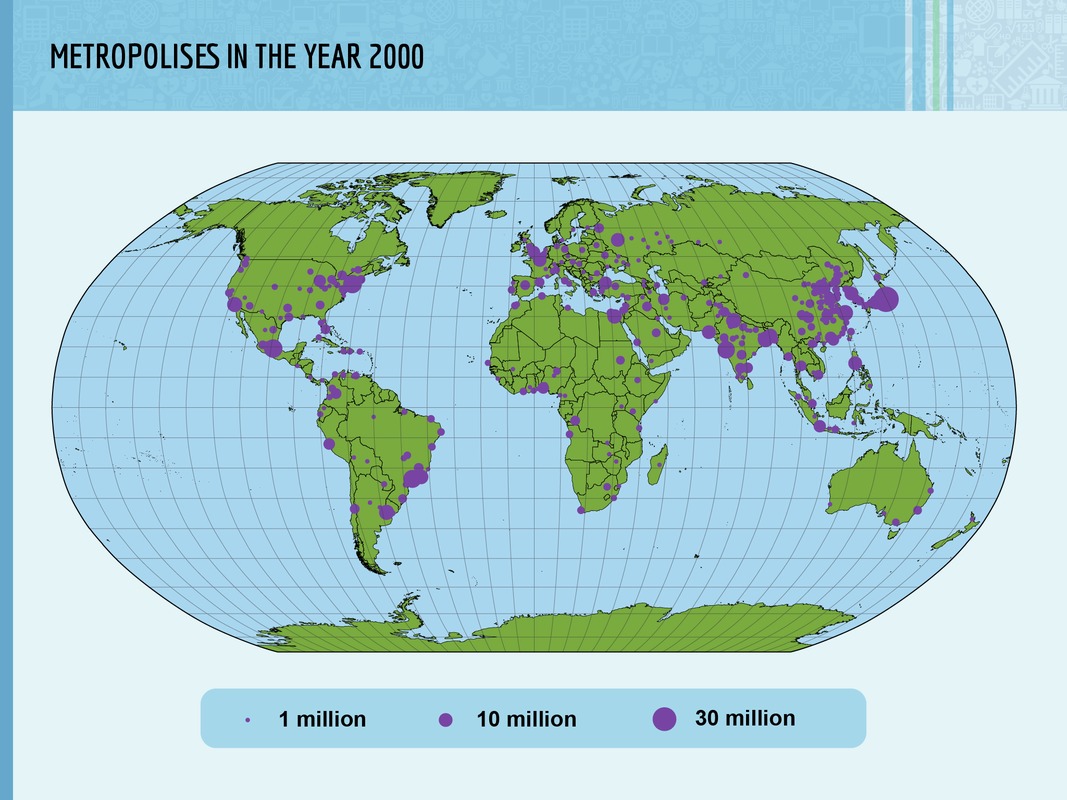6.1 Urbanization is a global phenomenon

Lights indicate where the largest cities on Earth are located.
The population of planet Earth is nearing 8 billion, and a large part of this population is concentrated in cities. One modern estimate suggests that approximately 4 billion people, half of Earth's total population, lives in cities or other urban areas. Urbanization is fast especially in many Asian and African nations, as people move from the countryside to the city for jobs and to gain a higher quality of living. However, a great majority of these people end up in the slum regions on the outskirts of large cities.
Cities with over a million inhabitants are called metroplises. As a result of urbanization, nearby metropolises can connect with each other and form large megalopolises. The BosWash region in the eastern United States (between Boston and Washington) is an example of such a chain of metropolises.
Nowadays, there are over 400 metropolises in the world. The number of metropolises is steadily growing as a result of population flow from the countryside to the cities, especially in developing nations.
Megacities are cities or metropolitan areas with a population of over 10 million. There are over 20 such megacities on the planet. The number of megacities is estimated to double by the end of the 2020s. Almost one tenth of Earth's total population is concentrated in these large metropolitan areas.
The growth of modern cities began in the latter half of the 18th century, when jobs created by industry lured people from the countryside to settle in large European cities. The growing urban population also required services, which in turn attracted other people to move from rural to urban areas. As a result, cities began to grow at a rapid rate. At the beginning of this process, the quality of living in European cities was quite low. However, this began to ameliorate as urban construction became more tightly regulated and healthcare systems improved.
Urbanization has taken place at a different rate in various parts of the world. It became a global phenomenon only in the latter half of the 20th century.
